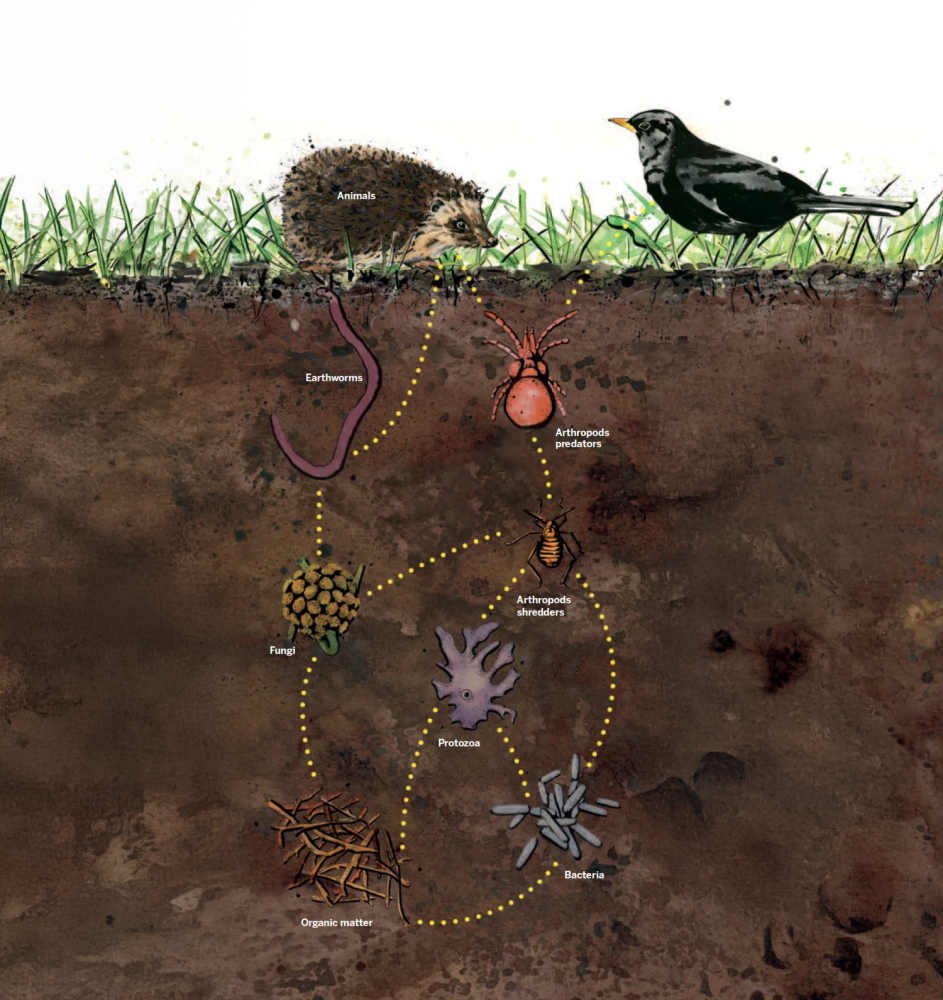Where Growth Really Happens
You’ve probably never heard of Charles Dowding.
He hasn’t been featured in Harvard Business Review. He’s never sat on a McKinsey panel. He’s not the kind of name that shows up on Bloomberg TV beside a ticker of market updates. You won’t find his book on a “Top 10 Business Reads” list passed around at leadership retreats.
Charles is a gardener. That’s it.
But he may be the most important business adviser you’ll never meet.
Dowding has this simple, radical idea about soil. Most people, he says, garden by feeding the plant—adding fertilizer, digging, dosing, fussing over what shows above ground. He does the opposite. He feeds the soil. Leaves it undisturbed. Lets the living network beneath—the bacteria, fungi, worms, beetles—do what it’s built to do. Healthy soil grows healthy plants. It’s that simple.
I think about this when I sit with executives planning the next transformation. The conversation is almost always about the “plants”: the new strategy, the brand refresh, the product launch, the performance initiative, the development of individuals. What if the real work, the life-and-death work, is underground? The trust and curiosity inside a team. The relationships that pass information quietly across departments. The sense of safety that lets people speak up before things break.
I once consulted with a company that kept “replanting” every two years. New structure, new vision, new buzzwords. Each time, leaders were shocked when nothing took root. They blamed talent, market headwinds, the weather of business. But the soil was dead. Over-tilled, chemically burned by constant fixes, stripped of the quiet life that makes growth possible.
Dowding would have warned them. Feed the soil. The plant will follow.
It’s not glamorous work. There’s no press release for building psychological safety, for noticing and protecting the unseen networks that keep a business alive. But if you’ve ever tried to grow something—a culture, a movement, a business that lasts—you know: the show above ground is only as strong as the life below it.
The best leaders I know are more gardener than engineer. They know when to step back, to nourish what can’t be graphed, to let roots do their slow, invisible work.
And though you’ll never see Charles Dowding at Davos, I suspect he understands your job and your business better than most of the people who claim they do.
Deep Cut: Below The Surface
A healthy company, like healthy soil, is an ecosystem. Every role, even the ones no one celebrates, feeds and depends on the others. Damage one part and the whole system weakens.
Bacteria → quiet processors of raw material
In soil, bacteria break down waste and turn it into nutrients.
In business, they’re the back-office processors, analysts, and support teams who convert raw data, transactions, and messy inputs into something everyone else can use. When they “die off”—underfunded, ignored—the whole system starves for clean, usable insight.
Fungi → network builders and connectors
Fungi create vast underground threads, linking roots and ferrying nutrients.
In business, these are the relationship builders—internal communicators, culture carriers, informal connectors—who move ideas and resources where they’re needed. They quietly keep the network alive and unlock hidden opportunities.
Protozoa → refiners and optimizers
Protozoa feed on bacteria and release nitrogen that fuels plants.
In business, think of managers and project leads who consume processed information and convert it into actionable energy for teams. They don’t generate the raw material, but they release its value where growth happens.
Nematodes → regulators and balancers
Roundworms keep populations in check and mineralize nutrients.
In business, these are risk managers, compliance teams, and strategic reviewers. They prune, question, and recycle, keeping unchecked growth from choking the system while freeing up resources for healthy expansion.
Arthropods → shredders and accelerators
Beetles and mites tear leaves apart, speeding decay and nutrient flow.
In business, they’re the troubleshooters and early-stage innovators—the people who take big, unwieldy problems, shred them into smaller parts, and accelerate learning so the system can use what’s been discarded.
Earthworms → openers and enrichers
Earthworms tunnel, aerate, and enrich with castings.
In business, these are the leaders who break up silos, improve flow, and enrich the culture—mentors, servant leaders, and operational designers who make the ground looser and more nourishing for everyone else.
Gastropods → messy but essential converters
Slugs and snails break down waste and bind soil particles, though they sometimes nibble crops.
In business, these are the critics, squeaky wheels, and even competitors inside your walls—the difficult customers, stubborn employees, or loud departments. They can frustrate growth but also process what would otherwise rot and help bind the organization together if handled well.
The point:
A thriving company isn’t a row of perfect plants. It’s the unseen, interdependent life below. Remove the bacteria (processors), ignore the fungi (connectors), silence the nematodes (regulators), and the visible growth withers no matter how much you fertilize.
Feed the soil and your strategy, your product, your future will follow.

